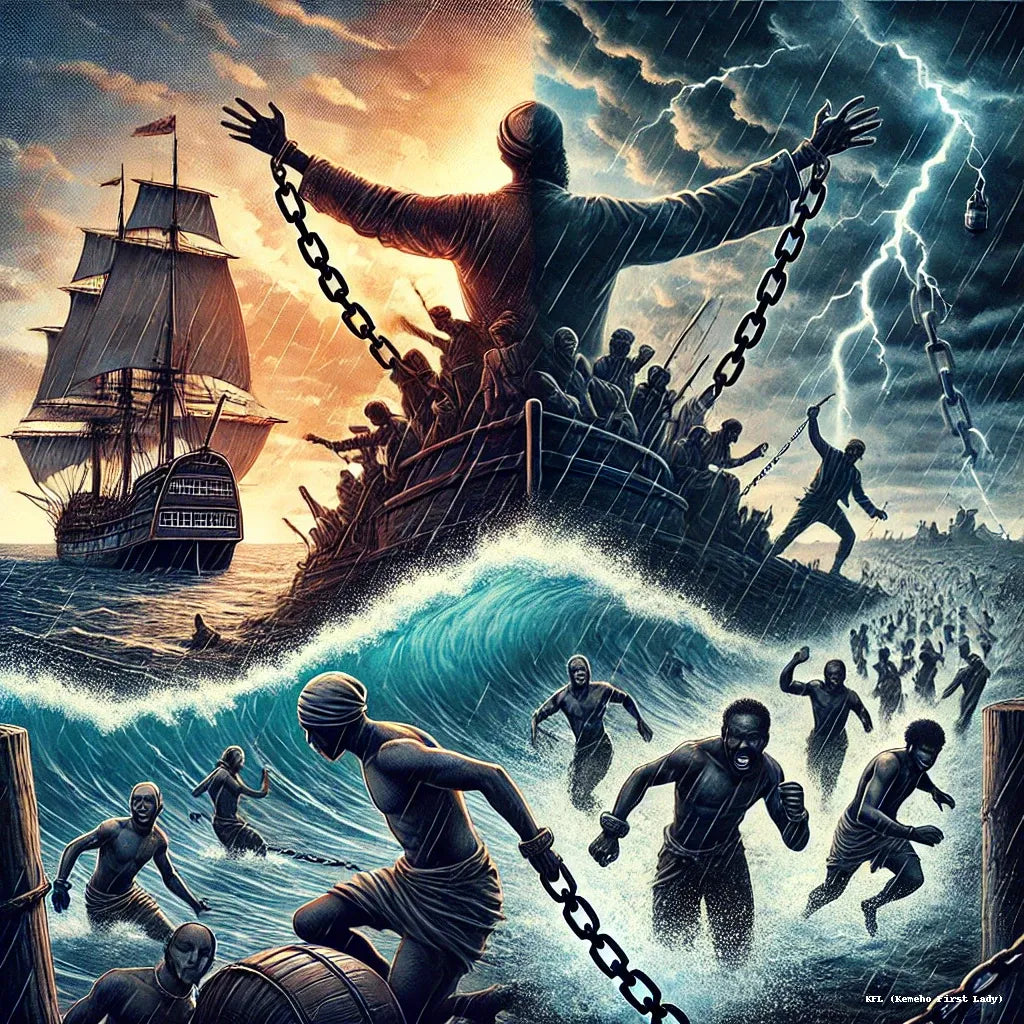
The history of the transatlantic slave trade and Black resistance
Share Label
The history of the transatlantic slave trade is one of humanity’s darkest chapters. For nearly four centuries, millions of Africans were forcibly taken from their homeland, sold as commodities, and subjected to inhumane slavery. Yet, in the face of this oppression, Black people never ceased to resist—through uprisings, escapes, and subtle acts of defiance. This article revisits the transatlantic trade and the many forms of Black resistance.
1. The Transatlantic Slave Trade: The Exploitation of a Continent
The transatlantic slave trade began in the 16th century and persisted into the 19th century, forming a triangular trade route between Europe, Africa, and the Americas.
- Captives were taken or sold by African kingdoms in exchange for weapons, alcohol, and manufactured goods.
- Slave ships crossed the treacherous “Middle Passage,” where captives endured horrific conditions.
- Once in the Americas, enslaved people were exploited on cotton, sugar, and tobacco plantations under a brutal and dehumanizing system.
2. Key Slave Ports and Memorial Sites
Several sites now stand as reminders of this tragic period:
- Gorée Island (Senegal) and its infamous House of Slaves.
- Ouidah (Benin), one of the main hubs for slave exports.
- Cape Verde, a stopover for slave ships.
- Locations like Martinique, Haiti, Cuba, the United States, and Brazil, where millions of enslaved people were sent.
These memorials are crucial for understanding the magnitude and consequences of the trade.
3. Slave Rebellions: Persistent Resistance
Despite harsh conditions, enslaved people constantly resisted:
- The Haitian Revolution (1791–1804), led by Toussaint Louverture and Jean-Jacques Dessalines, resulted in Haiti becoming the first free Black nation.
- Nat Turner’s rebellion (1831, United States), a significant uprising against slavery.
- The resistance of the Maroons, who established autonomous communities in Jamaica, Brazil, and Guyana.
- Rebellions on slave ships, such as the 1839 Amistad uprising.
4. Iconic Figures in the Fight Against Slavery
Numerous individuals dedicated their lives to abolishing slavery:
- Toussaint Louverture (Haiti), a military strategist and leader of the Haitian Revolution.
- Harriet Tubman (United States), who escaped slavery and freed hundreds via the Underground Railroad.
- Frederick Douglass (United States), a former slave turned author and tireless activist.
- Nzinga of Ndongo and Matamba (Angola), a queen who fiercely resisted Portuguese colonizers.
5. The Abolition of Slavery and Its Aftermath
Under pressure from abolitionists and uprisings, many nations ended slavery:
- 1807: The UK and US abolished the transatlantic slave trade.
- 1833: The British Empire abolished slavery.
- 1848: France abolished slavery.
- 1865: The United States abolished slavery with the 13th Amendment.
- 1888: Brazil, the last country in the Americas to do so, abolished slavery.
Despite these advances, former slaves often faced ongoing discrimination and harsh living conditions, laying the foundation for many of today’s inequalities.
Conclusion
The history of the transatlantic slave trade is marked by extreme violence but also by relentless resistance and victories won through immense sacrifice. Black people faced adversity with courage and determination, forging a legacy of resilience and a tireless fight for freedom.
This history—too often ignored or minimized—must be taught and honored. It serves as a reminder that the pursuit of justice and equality is an enduring struggle.









